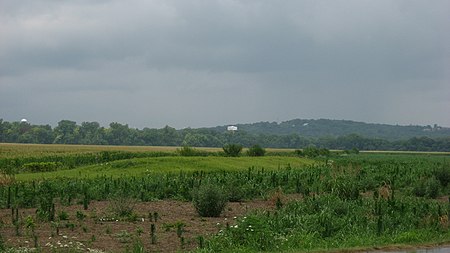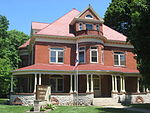Hopeton Earthworks
Mounds in OhioNational Historic Landmarks in OhioNational Register of Historic Places in Ross County, OhioOhio Hopewell

The Hopeton Earthworks are an Ohio Hopewell culture archaeological site consisting of mounds and earthwork enclosures. It is located on the eastern bank of the Scioto River just north of Chillicothe in Ross County, Ohio, about 1 mile (1.6 km) east of the Mound City Group and Shriver Circle on a terrace of the Scioto River. The site is a detached portion of the Hopewell Culture National Historic Park, along with the Mound City Group, Hopewell Mound Group, Seip Earthworks, Spruce Hill Earthworks, and the High Bank Works. The site is open to the public.
Excerpt from the Wikipedia article Hopeton Earthworks (License: CC BY-SA 3.0, Authors, Images).Hopeton Earthworks
Geographical coordinates (GPS) Address Website Nearby Places Show on map
Geographical coordinates (GPS)
| Latitude | Longitude |
|---|---|
| N 39.38357 ° | E -82.97904 ° |
Address
Hopewell Culture National Historical Park
Ohio, United States
Open on Google Maps









